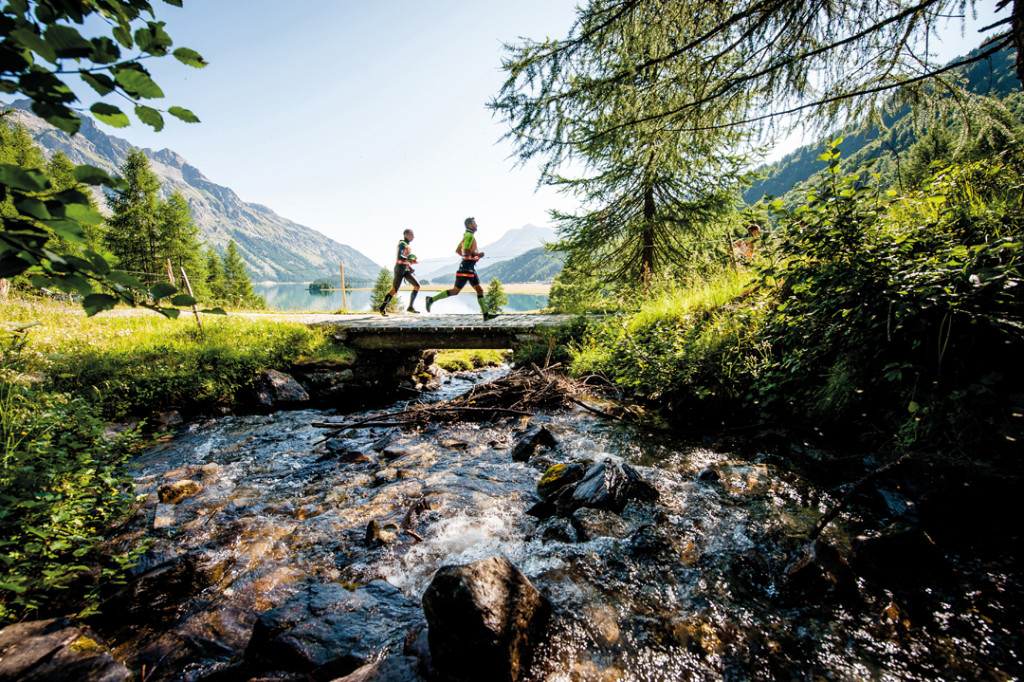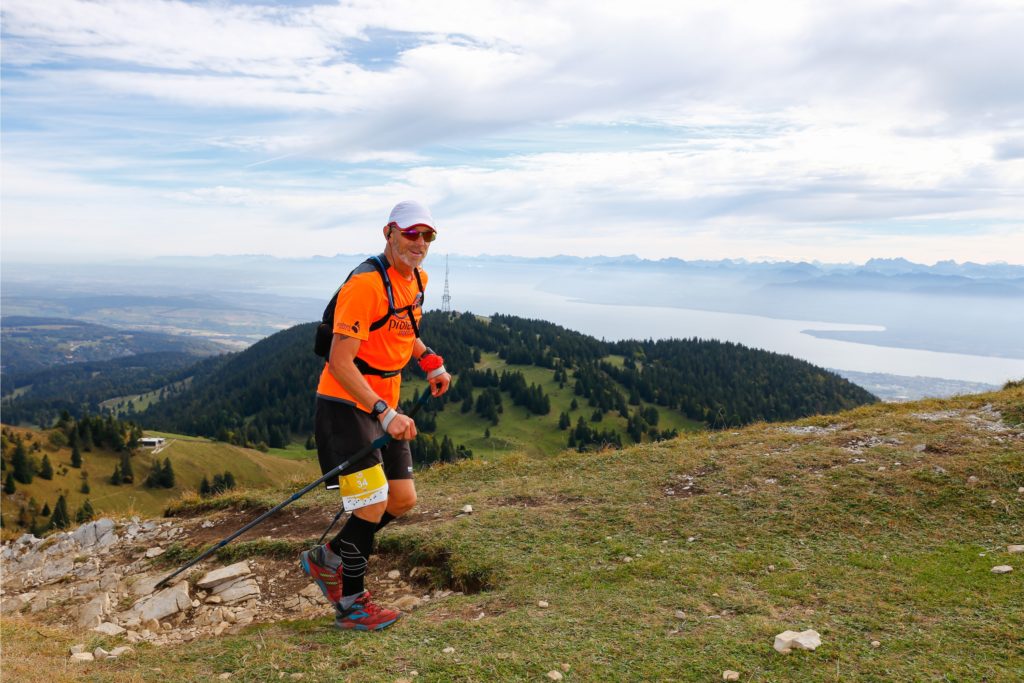
Engadin Swimrun 2015, Foto: JakobEdholm.com
The Swimrun
Why? If the gear-focused world of triathlon turns you off, the more back-to-basics world of Swimrun could be for you. These long distance aquathlons, set in some of the UK’s most picturesque landscapes, offer participants the chance to swim in lakes and run up mountains. What’s not to like?
How much training? When you go for a run along a lake or river, or along the coast, run in a wetsuit and jump in. Or swim with a dry bag buoy. Swim out and back or parallel to the shore but mark your route when you go in. Get out and repeat until you’re done.
One to try: Swimrun UK Lyn i Lyn Snowdonia
Date: TBC
Based on Sweden’s famous ÖTILLÖ, this event challenges competitors to swim in Snowdonia’s tarns before scaling Wales’ highest mountain. In total, it involves a 38K run and an 8K swim.
The multi-dayer
Why? Multi-day events are still few and far between in the UK, but completing one will give you a huge sense of satisfaction. Revive the dormant ‘journey gene’ that lives inside all us previous hunter-gatherers and sign up for a multi-day adventure.
How much training? Preparation will include time spent on feet (try to get at least six hours in, walking or running) as well as getting your nutrition right. This one is all about mind over matter and diet. So experiment with different fuels and choose non-saturated fats over sugary carbs. Practise running in the cold and packing a lightweight backpack.
One to try: Original Mountain Marathon
Date: 27-28 October 2018
A seriously tough two-day adventure, requiring navigational skills and no shortage of grit and determination. Regularly underestimated, it’s a challenge not to be approached lightly. But if you’re looking for a true challenge, this is a must-do multi-dayer.
The trail marathon
Why? A trail marathon beats a road marathon hands down, in terms of your own recovery time and having an awareness about what you are running through. Although you may not have applause ringing in your ears, if you experience some connection with your surroundings other than the enforced pit stop, you’ll be hooked.
How much training?
Going off-road means becoming a generalist. Include some multi-sport combos like swimming, cycling or core work at least once a week, as part of your racing or training cycle. Balance and strength are key, as well as recovery.
One to try: Endurance Life Exmoor
Date: 6 April 2019
If you can get past the steep entry price, try one of Endurancelife’s coastal series marathons. If for no other reason than they will give you an excuse to look out to sea without having to worry about navigation. This course is rated as ‘Strenuous’ so be prepared for a tough day out.
The fell race
Why? It’s a chance to visit almost any of the National Parks around the UK and to be self-sufficient with a map. Entry fees are low, you can often enter on the day. Plus, who can say no to a pasty and orange juice at the end? The real grass roots of the sport.
How much training? You may have to cultivate a dislike of tarmac and a love of navigation. But always keep an eye on the forecast and learn to interpret it. There are no junk miles on the fells. So just get out there in all weathers whenever you can. When you lose motivation, jump on a bike or go swimming. Most fell runners have a formidable base fitness.
One to try: Ennerdale Horseshoe
Date: 9 June, 2018
The Ennerdale Round, as it is known, is perhaps the jewel in the crown of the Lakeland Classics. Starting at a scout camp next to Ennerdale Water, the most westerly lake in the national park, the route will take you up some monstrous climbs like Red Pike, Green Gable and Pillar and is at least 21 miles. Be warned though, this is an FRA A race, which means an element of navigational competence is required.
The all-nighter
Why? Running all night, guided only by the light of your headtorch, is a truly unique experience. You’ll battle sleep deprivation but it’ll all be worth it to see the sun rise over the mountains.
How much training? The difference between this and a daytime ultra is you’ll be running when your body wants to shut down and sleep. So get used to running in the dark and try to run all night at least once in preparation.
One to try: Dusk ’til Dawn
Date: 27-28 October 2018
The concept is simple. Runners have to try to complete the 50-mile, which starts and ends in Buxton in the Peak District, before sunrise. Starting at sunset, entrants have exactly 14 hours and 13 minutes to navigate a challenging circuit along the Limestone Way and taking in the Cat and Fiddle, Shining Tor and Cat’s Tor. Anyone who is caught by the Grim Sweeper at the back will have to retire!






